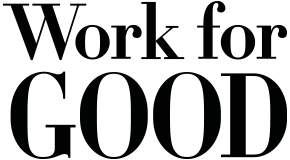[How We Hire] Powering effectiveness, innovation, and diversity
The work of The Center for Effective Philanthropy (CEP) is carried out by a team of 45 Cambridge- and San Francisco-based professionals, and Leaha Wynn – Associate Manager, Human Capital and Diversity and Inclusion Strategist – is responsible for the talent strategy that empowers them. Focusing on the way CEP recruits, hires, develops, and leverages their people, Wynn helps ensure that their team can provide the best possible support for foundations and major donors so they can, in turn, provide the best possible support for nonprofits around the country and worldwide.
Something I look for in a resume or cover letter: I love a cover letter that shows a candidate has done their homework. For us, cover letters are an important piece of the application. This is where a candidate can link their experience and their interests to the role and the organization. Because we are passionate and hold ourselves to high standards, we want to see what motivates a candidate to apply for a role at CEP when there are so many other opportunities they could pursue. Furthermore, a number of our roles require strong writing skills – whether it’s synthesizing large amounts of information into client memos, contributing to research reports, or serving on our team that handles external relations – so a cover letter can enhance an applicant’s chances by demonstrating a bit of their skillset.
One trait essential to employee success at the CEP: A growth mindset is needed at every level of the organization. The core of CEP’s work is listening – and then acting on what we hear to enhance effectiveness. We’ve extended that model from the organizational level to the individual, championing a continuous model for feedback, reflection, and growth as the basis of our performance management system. We regularly seek feedback on our work from external stakeholders and from each other, through informal and formal processes, in the spirit of learning and growth. Those coming to the organization from a more hierarchical and directive environment may need time to adjust, but it’s usually a very welcome change.
How we advance staff diversity and inclusion: We start with our hiring, by embracing practices which combat the impacts of implicit bias. For instance, we blind application materials before review; administer skills assessments for every role, instead of relying solely on conversations; and check the language in our job ads for gender bias. We also train all staff members conducting interviews in combating the potential for implicit biases in hiring. We measure the demographics of our pool at every stage of the process, embrace salary transparency in our job descriptions, and we don’t base an individual’s compensation on their previous salary or ability to negotiate.
Further, we embrace open communication and feedback through structures built into our day-to-day work, offering many opportunities to contribute to discussions about the organization’s direction and strategy. This leverages the diversity of background, perspective, and experiences at our organization.
How we encourage innovation: Each year, we administer our own Staff Perception Report assessment – the same one we developed for use with clients – to our own staff via a third-party administrator. This assessment measures staff perceptions in a number of ways that relate to effectiveness. We then discuss the results and address any themes uncovered. Based on those staff discussions, we’re experimenting this year with an “Innovation Week,” during which we’ll suspend client work and normal responsibilities, and dedicate time to new, promising ideas.
Something people love about working here: When we ask alumni and current staff what they love most about working at CEP, nearly everyone responds, “the people.” Leadership puts a lot of time and attention into fostering a strong culture, and finding and retaining excellent individuals. That culture is not just about “mutual respect,” though that is mentioned frequently, but a sense of caring for one another. For example, when a family member is sick, it’s not our unlimited sick-time policy that people cite, even though that does support us tremendously. Rather, it’s the team’s willingness, always, to pitch in and help out when “life” happens. Everyone recognizes that the supportive and collaborative atmosphere makes all the difference in our ability to be cohesive and effective.
Something cool we do to support staff: We have a professional development program that includes a rich orientation to the organization and our work, including a formal mentorship program. But the program does not stop there. We continue to support staff by offering refresher trainings on needed skills, individual professional development budgets, and regular sessions to build competencies and knowledge about our work and about developments in the sector. We leverage peer-to-peer learning all across the organization, as opposed to just one-directional learning. We incorporate elements of job shadowing, as you might find in any organization, but we also empower and encourage anyone at the organization to facilitate conversations about developments in the field related to our work, or expertise they are willing to share.
The Center for Effective Philanthropy works to make foundations and major donors more effective through research, assessments, advisory services, and programs that bring together and educate philanthropic leaders. You can learn more about them on their website, or by following them on Facebook, Twitter, or YouTube.



